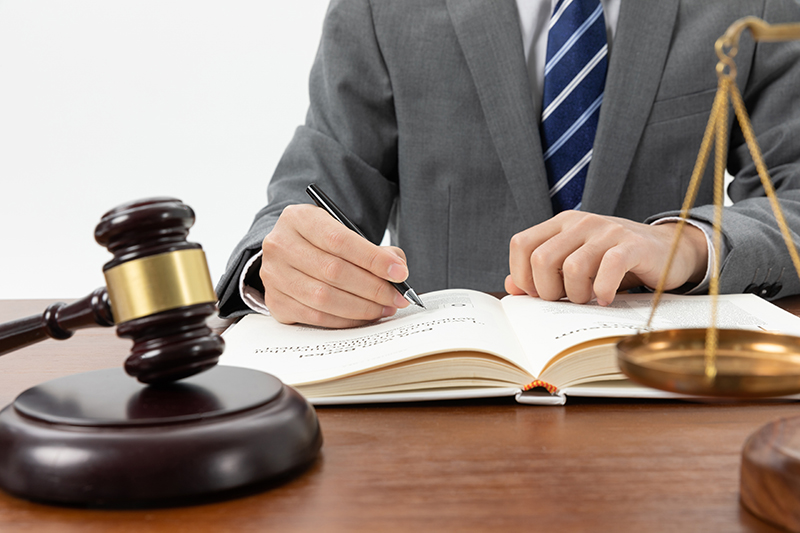
Legal dictation is the cornerstone of the legal profession, and accurate and professional transcription is paramount. Legal transcripts are vital for maintaining precise records, presenting evidence, ensuring transparency, and upholding the integrity of legal proceedings. That’s why lawyers depend on professional legal transcription services to deliver flawless written text that meets the rigorous standards of the legal industry. To achieve this level of excellence, it’s crucial to follow best practices when converting audio or video recordings of court hearings, depositions, or client interviews, into written documents. Let’s explore these essential guidelines in detail.
Growing Demand for Quality Legal Transcription
The demand for legal transcription is growing, according to recent reports. The global legal transcription market, which stood at around US$1988.9 in 2021, is expected to expand at a CAGR of 6.5 to reach a value of USD 3267.7 million by 2029, according to a Future Market Insights report. This growth is attributed to factors such as the increasing adoption of cloud services, increasing advancements in speech recognition technology, growing use of AI to optimize the transcription process and the growing need for transcribing presentations, conferences and interviews.
Why Accurate Legal Transcription is Paramount
Whether courtroom proceedings, depositions, legal conferences, or client meetings, transcribing legal dictation with precision is crucial for maintaining a reliable record. Mistakes or inaccuracies in legal transcriptions can have severe consequences, including misinterpretation of facts, legal disputes, or even jeopardizing a client’s case.
The primary reason why accurate legal transcripts are crucial is that they provide an accurate and reliable record of spoken content during court proceedings, depositions, hearings, or legal interviews. They offer an official account of the statements made, questions asked, and responses given by parties involved.
Transcripts allow attorneys to review and analyze the statements made by witnesses, opposing parties, or experts. Accurate documentation enables them to prepare arguments, cross-examinations, and present evidence to support their case.
By providing a verbatim record of previous proceedings, written documents help appellate judges understand the arguments, legal interpretations, and factual findings presented during the trial. Transcripts allow appellate courts to assess the fairness and accuracy of the original trial.
Accurate legal transcripts are essential for the preservation of witness testimony, expert opinions, and other critical information. They serve as a record, facilitating future reference if needed, to verify facts, or settle disputes that may arise after the conclusion of the legal proceedings.
Furthermore, transcripts streamline communication and promote collaboration among legal professionals. Attorneys can share and exchange transcripts with their team to ensure a shared understanding of the case, witness statements, or court orders.
Legal transcription accuracy is also paramount as lawyers, researchers, and scholars studying specific cases or legal issues reference the transcripts to identify precedents, evaluate legal arguments, and understand the reasoning behind judicial decisions.
For legal transcripts to serve these purposes, they must be clear and concise.
Best Practices for Efficient Transcription of Legal Dictation
Here are 6 best practices to ensure clear and concise legal transcripts:
- Active listening: Pay close attention to the audio while transcribing legal dictations. Understand the context of the conversation and focus on capturing the speaker’s words accurately. Active listening helps avoid misunderstandings and ensures clarity in the transcript.
- Follow rules for verbatim transcripts: Verbatim transcription requires transcriptions to include all sounds present in the recording. This means that filler words like “um” or “uh” are transcribed as well. Additionally, when transcribing proceedings in a courtroom, transcriptionists must also take note of various sounds, such as throat clearing, coughing, or background conversations. These nonverbal cues can hold significance and provide valuable context. This type of transcription is particularly important when documenting interviews or testimonies for legal purposes. It helps capture the intent behind the spoken words, including hesitations, pauses, repetition, and nonverbal cues. Lawyers rely on these transcriptions to gauge the speaker’s level of nervousness, preparedness, or hesitancy during courtroom proceedings or interrogations.
- Organize and structure the transcript: Ensure proper formatting and organization to enhance clarity. Divide the transcript into sections, identify speakers, and use indentation or bullet points to separate distinct ideas or topics. This allows readers to navigate through the transcript easily and comprehend the information more effectively. If required, include time stamps at regular intervals or whenever there is a change in topic or speaker. Time stamps can help reference specific points in the dictation for future use or to facilitate easy navigation within the transcript.
- Edit for grammar and punctuation: Ensure the transcript adheres to proper grammar rules and punctuation guidelines. Correct any grammatical errors, typos, or inconsistencies that may impede clarity. Proper punctuation placement in legal transcripts is crucial to ensure clarity, accuracy, and readability.
- Use clear and simple language: Opt for clear and straightforward language when transcribing legal dictations. Avoid complex sentence structures, jargon, or excessive legalese that may hinder comprehension. Use plain language whenever possible while preserving the accuracy and intent of the original message.
- Remove non-essential information: While verbatim transcription is often preferred in legal settings, removing non-essential information can help streamline the transcript. Omit unnecessary filler words, repeated phrases, false starts, and other speech elements that do not contribute to the meaning or understanding of the content.
- Proofread and revise: After completing the initial transcription, thoroughly proofread the transcript for errors, clarity, and conciseness. Carefully review sentence structures, remove redundancies, and rephrase sentences for improved readability. Consider the transcript from the perspective of someone who is not familiar with the legal terminology or subject matter.
Proofreading can be done effectively by comparing the transcribed document with the original audio recording. By listening to the recording while reading the transcription is an effective way to easily identify any omitted words, misspellings, or punctuation errors that may have occurred. Another helpful approach is to read the transcribed document out loud. This can help detect inconsistencies, grammatical mistakes, or clumsy sentence structures that might have been overlooked during the initial transcription process. Furthermore, using spelling and grammar checking tools can be beneficial in uncovering any typos or grammatical errors that might have slipped through the cracks.
To ensure accuracy and consistency in transcriptions, create a quality control checklist. This checklist should encompass essential elements such as accurate name spellings, appropriate punctuation usage, adherence to formatting guidelines, and overall readability. By adhering to the checklist, the proofreading process becomes standardized, minimizing the possibility of overlooking errors.
With all the attention to detail that it deserves, legal transcription is best left to professionals. A legal transcription company will have experienced legal transcriptionists who possess a strong grasp of legal terminology and context, and can accurately capture every word. With their exceptional grammar and punctuation skills, coupled with adherence to specific formatting requirements, they can provide high-quality transcriptions that align with the expectations of legal professionals. In parts of the dictation are unclear or ambiguous, reliable legal transcriptionists will proactively seek clarification from the client. This commitment to accuracy helps prevent potential inaccuracies or misunderstandings, ensuring precise, reliable and secure transcriptions that meet specific needs.
Leave your transcription tasks to us and focus on your legal practice!
Contact us Today to Discuss your Specific Needs! Call us to Find out More



